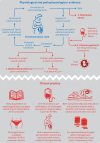Inconsistent definitions of labour progress and over-medicalisation cause unnecessary harm during birth
- PMID: 38084433
- PMCID: PMC10726361
- DOI: 10.1136/bmj-2023-076515
Inconsistent definitions of labour progress and over-medicalisation cause unnecessary harm during birth
Abstract
Nanna Maaløe and colleagues argue that resource challenges, unclear and outdated clinical practice guidelines, and lack of women’s perspectives lead to overdiagnosis and overtreatment of prolonged labour
Conflict of interest statement
Competing interests: We have read and understood the BMJ policy on declaration of interests and have no conflicts of interest to declare.
Figures


References
MeSH terms
LinkOut - more resources
Full Text Sources
Medical
